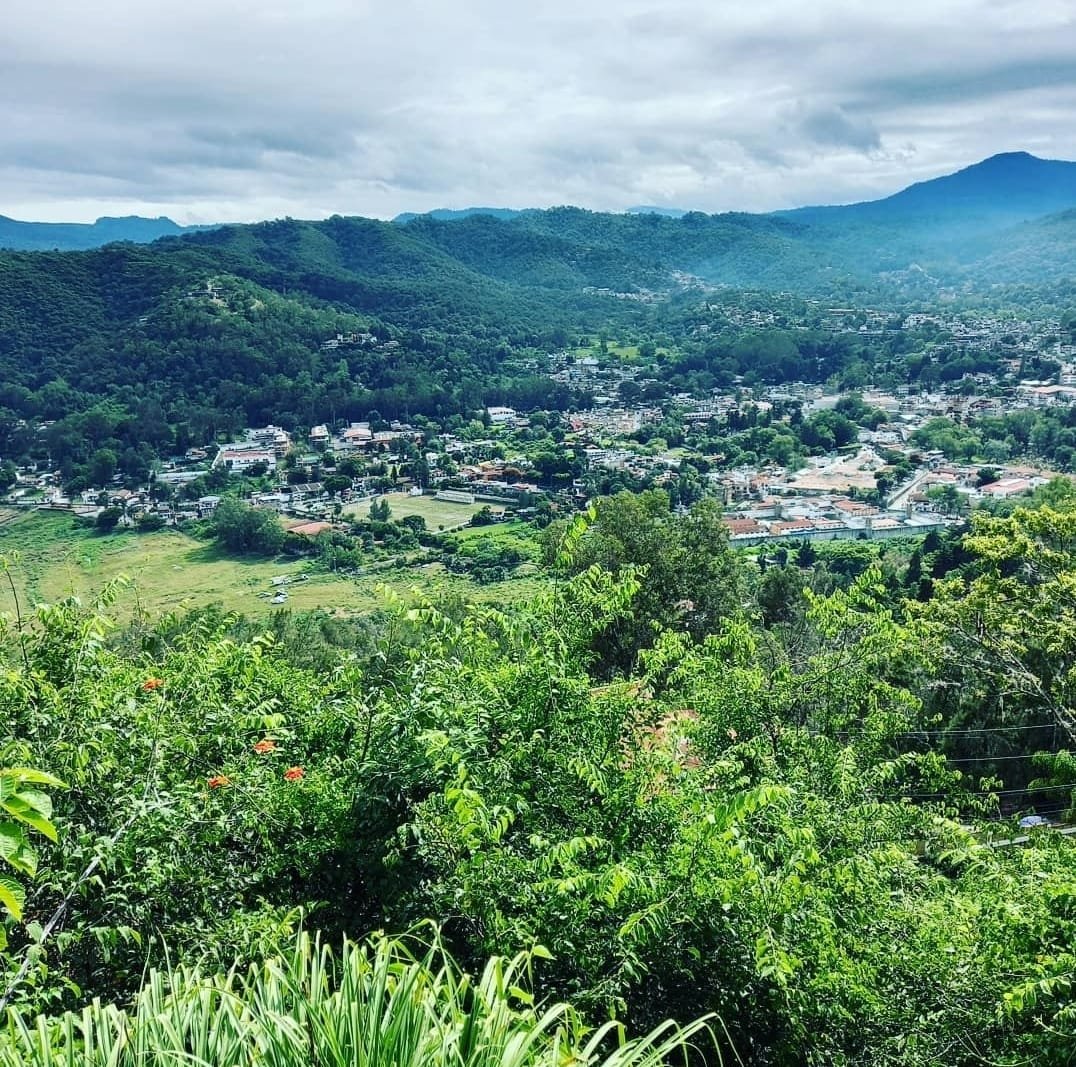Valle de Bravo

Valle de Bravo sits like a jewel among the mountains in the State of Mexico, with a shimmering lake that mirrors the sky. It offers a tranquil escape from the bustle of Mexico City, yet it’s still off the radar for many global travelers. The town is best known for its cobblestone streets and colonial-era architecture, which give it a timeless feel. Outdoor lovers flock here for paragliding, mountain biking, and hiking, as the surrounding terrain is rugged and beautiful. The annual Festival de las Almas transforms the town into a riot of color, music, and culture during Day of the Dead celebrations, drawing visitors from across the country. With about 60,000 residents, Valle de Bravo balances a lively local culture with a peaceful vibe. Its altitude of 1,800 meters means the climate is mild and comfortable all year, perfect for strolling or boating on the lake. Valle de Bravo’s blend of natural beauty and cultural richness makes it an underrated gem waiting to be explored.
Tulum

Tulum is world-famous for its ancient Mayan ruins dramatically perched above the turquoise Caribbean Sea, but there’s so much more beneath the surface. While some beaches are now well-trodden, hidden cenotes and eco-resorts preserve an air of mystery and exclusivity. The town’s culinary scene has blossomed, with chefs using local ingredients to create bold new flavors that delight both locals and visitors. Tulum’s focus on sustainability has attracted a creative crowd, from artists to yogis, giving the town an unmistakably bohemian spirit. With roughly 40,000 inhabitants, it still feels intimate despite its growing popularity. Average temperatures hover around a balmy 27°C, making Tulum a reliable getaway whether you crave sun or a swim. Cenotes, those magical freshwater sinkholes, offer a surreal swimming experience surrounded by jungle. The balance between history, nature, and modern living keeps Tulum endlessly intriguing.
San Miguel de Allende

San Miguel de Allende is a living canvas, its colonial streets bursting with color and creativity. Named a UNESCO World Heritage site, this city has attracted artists, writers, and dreamers for decades. The art galleries and boutique shops are as vibrant as the bougainvillea spilling over the walls. With a population of about 150,000, San Miguel feels cosmopolitan yet retains the warmth of a small town. Festivals fill the calendar, from fireworks-lit fiestas to the San Miguel International Film Festival, ensuring there’s always something to celebrate. The city’s altitude at 1,900 meters offers breathtaking panoramas and cool, pleasant evenings. A diverse community of locals and expats combines traditional Mexican hospitality with international flair. San Miguel’s spirit is infectious, inviting everyone to linger, create, and be inspired.
Real de Catorce

Real de Catorce is a town that feels suspended in time, high in the mountains of San Luis Potosí. Once a bustling silver mining hub, today it’s a hauntingly beautiful destination, with stone ruins and narrow streets that whisper old legends. The town’s population is tiny—just around 1,000 residents—yet it draws spiritual seekers and adventurers from all over. Reaching Real de Catorce means passing through a dramatic tunnel carved into the mountains, heightening the sense of discovery. The area is sacred to the indigenous Huichol people, who visit for annual pilgrimages seeking healing and enlightenment. At 2,600 meters above sea level, the air is crisp, and the vistas are staggering, especially at sunrise or sunset. Local cuisine, like hearty stews and handmade tortillas, warms visitors after a long day of exploration. Real de Catorce’s mystical atmosphere lingers long after you leave.
Pátzcuaro

Pátzcuaro in Michoacán is a tapestry of indigenous tradition and colonial charm, set beside a shimmering lake. Famous for its Day of the Dead celebrations, the town becomes a living work of art with colorful altars and glowing candles lighting the night. Artisans fill the cobblestone streets and markets with handmade crafts, from intricate textiles to lacquerware, keeping ancient skills alive. The population is about 50,000, many of whom proudly preserve their Purépecha heritage through language, music, and rituals. Lake Pátzcuaro is the heart of daily life, where fishermen still use butterfly-shaped nets to harvest the waters. The annual Noche de Muertos festival draws visitors worldwide who come to witness the unique blend of pre-Hispanic and Catholic traditions. At 2,000 meters in elevation, the climate is cool and ideal for exploring churches, plazas, and forests. Pátzcuaro’s blend of history and living culture leaves an indelible impression on all who visit.
Tequila

Tequila, in Jalisco, is more than just the birthplace of Mexico’s iconic spirit—it’s a town that pulses with history and flavor. Surrounded by vast fields of blue agave, Tequila’s landscape is a study in vibrant blues and greens under the Mexican sun. Visitors can tour legendary distilleries, witnessing the centuries-old process of transforming agave into the world-famous drink. The town’s colonial center is alive with music, festivals, and the laughter of locals and tourists alike. With a population of about 40,000, Tequila manages to feel both lively and welcoming. The annual Tequila Festival is a highlight, drawing connoisseurs and curious travelers eager to sample new blends and classic favorites. Average temperatures are a comfortable 25°C, making it pleasant to explore the town’s plazas and markets at any time of year. Tequila’s mix of tradition, hospitality, and, of course, spirits, makes for an intoxicating experience.
Todos Santos

Todos Santos, perched on the Baja California Sur coast, is a haven for artists, surfers, and seekers of serenity. The town’s white-sand beaches and powerful waves have made it a magnet for surfers, while its colorful streets and galleries attract creatives from around the world. Despite its growing reputation, Todos Santos still feels laid-back, with a population of just about 7,000. The Todos Santos Music Festival and numerous art fairs fill the calendar, turning the town into a cultural hotspot. Whale watching is a major draw during migration season, when gray whales splash just offshore. Historic buildings, including the iconic Hotel California, add a sense of mystery and nostalgia. The average temperature sits at a pleasant 24°C, ideal for wandering between the beach and the town’s many cafes. Todos Santos is a place where inspiration and relaxation meet.
Huauchinango

Huauchinango, tucked away in Puebla’s lush mountains, is a place where nature and culture thrive together. The town is encircled by rivers and forests, providing endless opportunities for hiking, fishing, and adventure. With a population of around 30,000, Huauchinango has a small-town feel but an outsized sense of pride, especially during the dazzling Feria de las Flores. This annual flower festival transforms the town into a canvas of color, with parades, dances, and markets bursting with blooms. Indigenous traditions remain strong, with local crafts and foods like mole and tamales offering a taste of history. At 1,200 meters above sea level, the climate is gentle and perfect for exploring nearby waterfalls or mountain trails. The town’s markets are vibrant, filled with fresh produce and handmade wares that reflect the region’s identity. Huauchinango’s charm lies in its authenticity and the warm welcome of its people.
Bacalar

Bacalar, in Quintana Roo, is best known for its dazzling “Lake of Seven Colors,” a lagoon so clear and vivid it almost seems unreal. Unlike its crowded Caribbean neighbors, Bacalar remains peaceful, offering a slower, more authentic pace of life. The lagoon is the centerpiece, perfect for kayaking, swimming, or simply gazing at the shifting blues from a hammock. The town, with a population of about 10,000, feels intimate and relaxed, with eco-lodges and small inns dotting the shoreline. History buffs will appreciate the San Felipe Fort, which provides sweeping views and a window into the area’s pirate-fighting past. Average temperatures around 28°C make Bacalar a warm-weather paradise all year. Many locals are involved in eco-tourism, working hard to preserve the lagoon’s unique ecosystem for future generations. Bacalar’s blend of natural wonder and quiet hospitality is truly unforgettable.
Izamal

Izamal, in Yucatán, is known as the “Yellow City” thanks to its striking golden-hued buildings that glow in the Mexican sun. The town’s Mayan and colonial history intertwine, with ancient temples and a massive Franciscan monastery dominating the landscape. Izamal’s streets are quiet and cobbled, perfect for exploring by foot or horse-drawn carriage. The population, around 18,000, is proud of their heritage, with local artisans creating beautiful pottery and embroidery. Each evening, the town comes alive with music and traditional dances in the main plaza, offering a glimpse into Yucatán’s rich culture. Climbing the Kinich Kakmó pyramid rewards visitors with panoramic views of the yellow city and the surrounding countryside. Izamal’s pace is unhurried, making it an ideal spot for those seeking reflection amid beauty. The town’s blend of history and hospitality makes it a hidden treasure waiting to be discovered.







